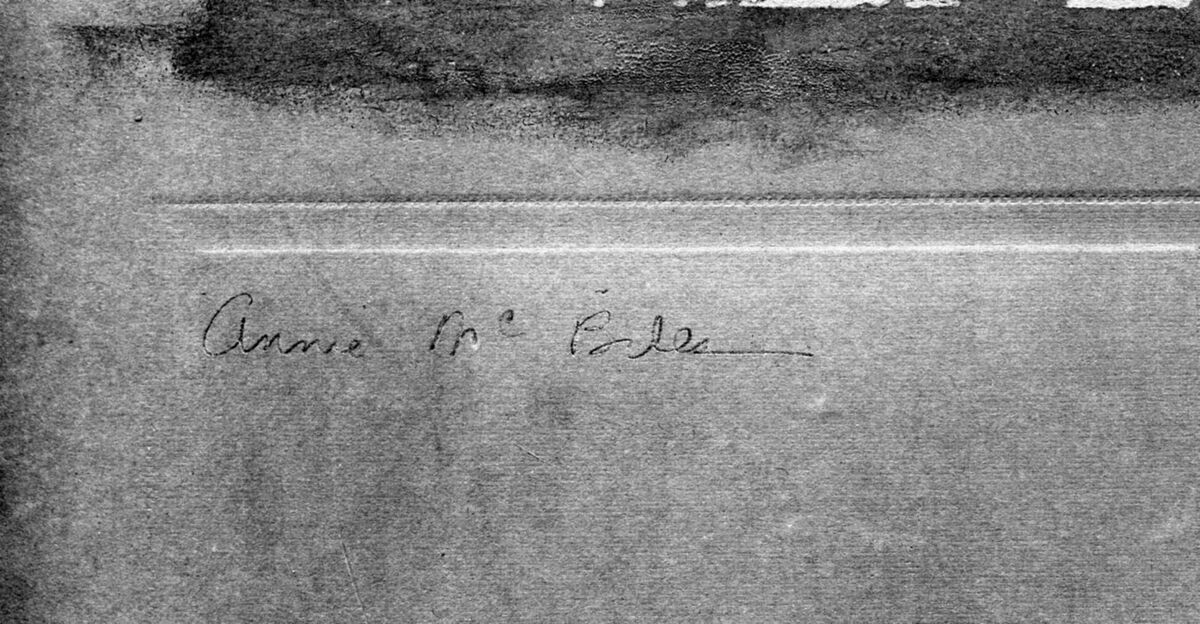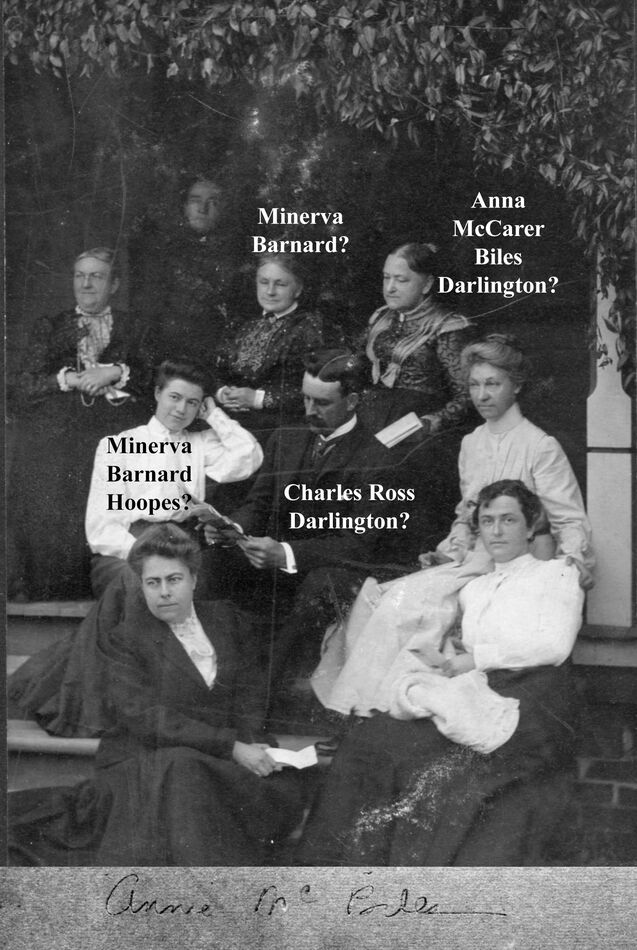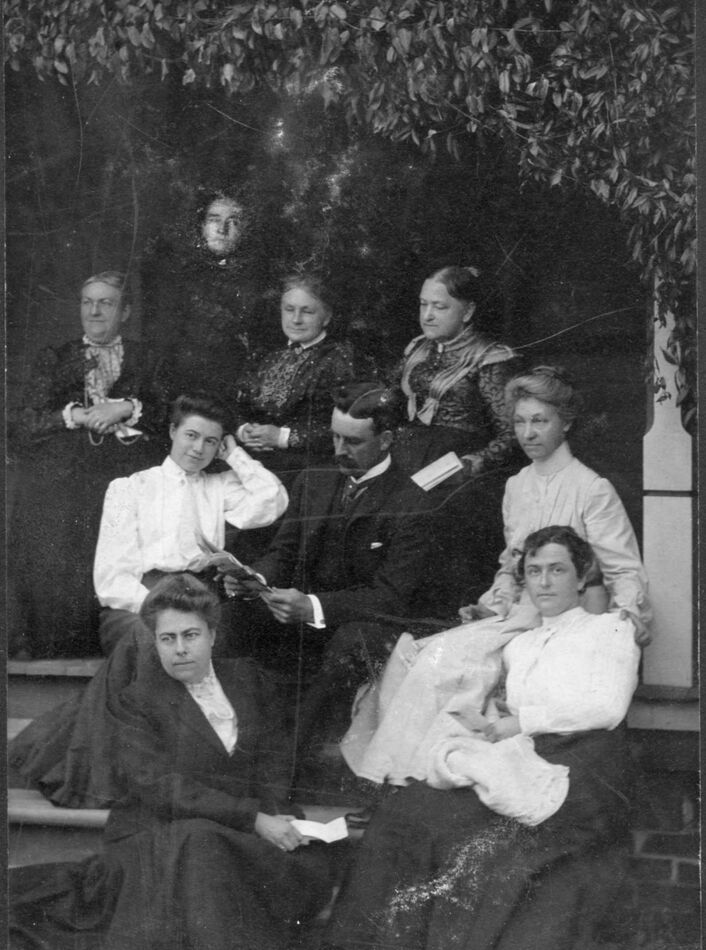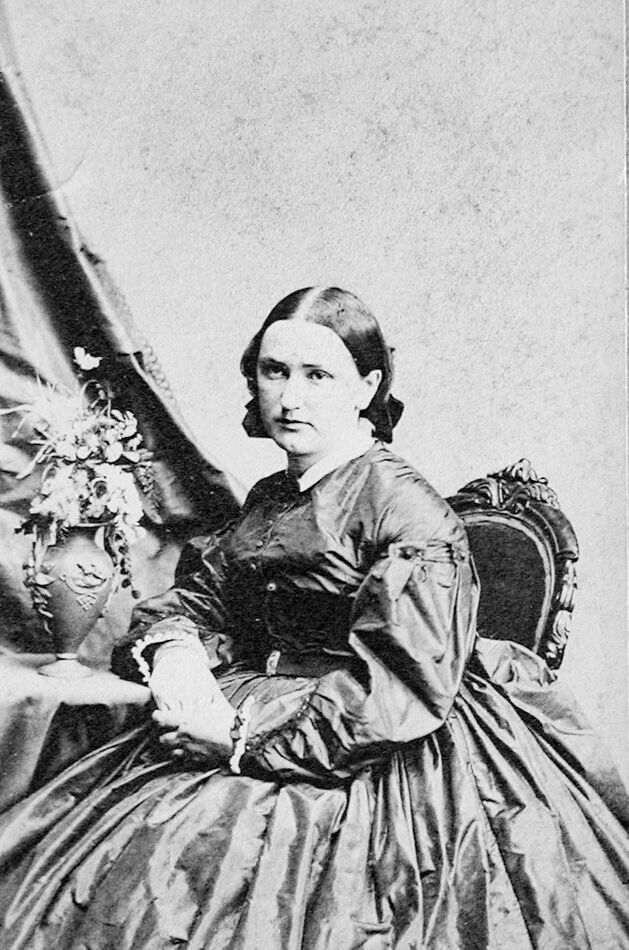Posts for: DirtFarmer
Apr 29, 2024 10:58:35 #
lamiaceae wrote:
Wow, no one seemed to a able to read your question. It is clearly to me about using a Circular Polarizer on a film camera. My guess it would make no difference but I have not tried using a Circular Polaringing filter on any of my film cameras since my first DSLR. I have rarely shot film since going Digital in 2010.
https://www.uglyhedgehog.com/t-805927-2.html#14592365
tl;dr
Next to last paragraph
Apr 29, 2024 07:23:31 #
.
Apr 29, 2024 06:26:12 #
Photolearner01 wrote:
Thanks for your help. The photo in question is a family photograph so copyright is not an issue. It is somewhat smaller than an 8 x 10.
Thanks
Photolearner01
Thanks
Photolearner01
I'm glad to hear that you have at least one important family historical photo. IMHO, family photos are important. And also the documentation that goes with a family photo is important. Both the photo and the documentation are worth preserving.
My family had a few photos that date back to the 1800s. Most of them came with writing on the back with a few details. Some came with minimal details. Some were completely unannotated. My wife's family had a boxful of photos. About half of them had no annotation and nobody knew who they were.
As time goes on, some of our family historical photos get more removed from the current family. I think it's important to preserve the history by placing annotation on the photos. With the advent of digital, this gets tricky. These days, probably most photos are viewed from a digital source. Albums of photos are so last millennium. With that shift, the writing on the back of the photos has disappeared. So you need an alternative way to document your family history.
There are ways to do this, but they are not all consistent with artistry. Digital photos have metadata, which can include text describing who, what, why, when, where. But not everyone knows that metadata exists, let alone how to view it. The only really safe way to document a photo is to include the documentation in the image. This of course impacts the artistry of the photo, but no matter how you copy the photo the documentation will be on the image (unless it is cropped off).
So you need two photos. One will be the original photo, in all its artistic glory. The other will be the original photo with the names of the participants added to the image in such a way as to identify them. Additional documentation can be added in the margin of the image. They should go together, and since one of the major ways of preserving a family photo is to distribute it to all the family, both version should be sent.
I have a description of some ways to document photos. There are several different processes available, described on UHH user pages starting with Adding Documentation to Family Photos. Take a look.
PS: It sounds like you have a paper copy of the photo. You need a digital copy to add the annotation that I have described. A good scanner will be able to do that. Most copy facilities will have the ability to scan an existing photo and produce a digital copy. The skills needed to add the annotation can probably be found in a local photo club if you don't have the digital skills yourself. But if you take this on as a long term project (including other family photos) you can develop the skills to do this. One thing to consider is that you should pick recent photos as well as historical photos. Those recent photos will be historical in another hundred years or so.
Apr 28, 2024 18:15:45 #
TriX wrote:
I prefer the term “machine learning”...
I wish my car's GPS would learn.
It's really a pretty rudimentary program. I tell it where I want to go and it knows where I am so it tries to chart a path for me to take. It knows which the major roads are and which the minor roads are. It sometimes knows which roads are one way.
I have a couple places I want to go that mix major and minor roads. My GPS has a tendency to choose the major roads preferentially. But as a result, it will pick a route that travels on a minor road until I want to get onto a major road. So the GPS takes me straight on the minor road to a stop sign. I then have to navigate onto the major road with a left turn through the stop sign. However, I know that there is a short cut on another minor road that crosses the major road at a traffic light. I always take it. My GPS has to recalculate each time. If it learned, it would be great. That way when I had a similar situation on a path I don't travel frequently enough to remember, it will choose the easier path through the traffic light so I don't have to make a left turn onto a busy highway.
I must admit that my phone does a better job in this regard. It doesn't learn but it knows the difference between a stop sign and a stop light on a major road. The only problem is that it doesn't integrate well with my car GPS. Hopefully the next car I buy will have higher intellegence and better integration between different systems. I would prefer to use the phone because it keeps updates with traffic and road changes. But the interface is so klunky that it's difficult to use it.
I really agree with the comment I have seen posted that the proper use of AI is for the mundane, repetitive tasks of life rather than the creative tasks. The problem is that the mundane repetitive tasks are physical (dishes and laundry) while the creative tasks are mental and don't require hands and feet.
Apr 28, 2024 17:39:58 #
dbrugger25 wrote:
I know that for digital photography circular polarizers are necessary to prevent disturbing patterns.
Do circular polarizers work properly with film? Is there any known downside?
I have an old Crown Graphic 4 X 5 with an f:4.7 Schnider lens and would like to use a polarizing filter on it.
Do circular polarizers work properly with film? Is there any known downside?
I have an old Crown Graphic 4 X 5 with an f:4.7 Schnider lens and would like to use a polarizing filter on it.
The problem with linear polarizers on cameras is not whether they are film or digital cameras. The problem arises from the fact that light reflected from a dielectric surface can be partially polarized (without using a polarizing filter). In fact early polarizers were just stacks of glass at angles that polarized the light.
Since light can be polarized on reflection, and since autofocus systems on cameras depended on light that was bounced around from mirrors and through various prisms to the autofocus sensor, the use of polarized light meant that the light that reached the autofocus system could be polarized in a different direction from unpolarized light that entered the camera. That could potentially cause errors in the autofocus system.
Using circularly polarized light mitigates this problem because circularly polarized light does not change polarization direction on reflection. That means that it acts like unpolarized light when it comes to the autofocus system. But since the outer half of a circular polarizer is a linear polarizer, it affects the light entering the camera just as a linear polarizer would. The second half of the circular polarizer is a quarter wave plate, which produces a quarter wave delay in one of the polarization components coming through the filter. This means the electric vector of the light wave is not constrained to one direction (as a linearly polarized wave would be) but has two components with a 90 degree phase difference, so the electric vector travels in a circular fashion. Hence the term 'circular polarization'. https://www.uglyhedgehog.com/user-page?upnum=3002
Autofocus systems were developed for film cameras late in the film era and digital cameras took them as a standard feature.
I suspect the effect on autofocus systems is small so that a linear polarizer will work on a modern camera. There is the possibility of focus errors, which I have not evaluated. I took a quick look a couple decades ago and didn't see any effect but it was not a real definitive study.
Note that a circularly polarizing filter will act as a linearly polarizing filter if it is reversed. The quarter wave plate will do nothing important to the light, leaving the linear polarizing component of the filter to do all the work.
Your Crown Graphic will work with either a circular or a linear polarizer (my old Speed Graphic did not have autofocus). Linear polarizers may be cheaper, but since circular polarizers are THE thing to use these days, linear polarizers may be in shorter supply (and therefore higher prices) than the circular polarizers.
PS: 'Disturbing patterns' probably refers to Moiré patterns, which arise from patterns in an image interfering with the square rectangular grid of sensors in a digital camera. They have nothing at all to do with polarizers. It is purely a geometric effect. It is not a problem with film because the film grain is arranged in a random pattern.
Apr 28, 2024 15:01:52 #
Martys wrote:
Orange juice with vodka in a tall chilled glass,................e zee p zeee...........lol
Batteries not included
Apr 28, 2024 10:02:14 #
A few years ago I purchased a Craftsman cordless screwdriver on impulse. It was interesting but aside from using it a couple times it sat on the workbench. I wound up giving it away.
The cordless screwdriver looked like a normal screwdriver but as soon as you put some torque on a screw the screwdriver would start to turn faster. It really didn't lend itself to controlled driving.
I do use my variable speed drill to drive screws but I have better control of the torque with my finger on the drill trigger, probably because I'm used to the drill and the amount of force I have to put on the trigger to get a given driving speed. And the speed is variable under my control, whereas the cordless screwdriver basically had two speeds: on and off.
The drill/driver gets used for rough work and usually for finer work I use it to get the screw close to seated, then use a hand driver for the final screw-up.
The cordless screwdriver looked like a normal screwdriver but as soon as you put some torque on a screw the screwdriver would start to turn faster. It really didn't lend itself to controlled driving.
I do use my variable speed drill to drive screws but I have better control of the torque with my finger on the drill trigger, probably because I'm used to the drill and the amount of force I have to put on the trigger to get a given driving speed. And the speed is variable under my control, whereas the cordless screwdriver basically had two speeds: on and off.
The drill/driver gets used for rough work and usually for finer work I use it to get the screw close to seated, then use a hand driver for the final screw-up.
Apr 28, 2024 09:37:13 #
Not sure how you attach a label to a lost item.
??
??
Apr 27, 2024 18:51:11 #
When I was a kid we decided to make an element collection. We made Bromine by passing chlorine through Sodium Bromide, then condensing the effluent into a bottle.
We did this in the basement. Without ventilation.
Sometimes I’m amazed that I made it to 15, much less 84.
We did this in the basement. Without ventilation.
Sometimes I’m amazed that I made it to 15, much less 84.
Apr 27, 2024 15:53:13 #
DirtFarmer wrote:
How do we know that Jerry himself is not an alien?
Is there any proof that ukuleles are not alien devices for which we do not understand the sinister purpose?
For that matter, how do YOU know that I am not an alien trying to redirect you to Jerry to hide my alieninity?
I neither confirm nor deny.
Apr 27, 2024 14:07:39 #
How large a photo are you trying to produce?
Our Historical Society made some posters using historical photos from around town. They just used a local facility that produces engineering drawings and displays for presentations. A few years later our Planning Board got a large printer that would do displays up to 48" wide (not sure of the exact width but it was fairly wide). They were used for posters of events for the town and presentations at Town Meeting.
If your town does not have a large printer for such displays, they may be willing to let you know where they get things like that done. Also, businesses that rely on presentations for bids either have large printers or farm those things out and may be able to direct you to a good supplier.
Also, you may have to show that you have the right to reproduce a photo. If it's historical, it probably means you didn't take the shot. But copyrights can be extended for quite a while.
Our Historical Society made some posters using historical photos from around town. They just used a local facility that produces engineering drawings and displays for presentations. A few years later our Planning Board got a large printer that would do displays up to 48" wide (not sure of the exact width but it was fairly wide). They were used for posters of events for the town and presentations at Town Meeting.
If your town does not have a large printer for such displays, they may be willing to let you know where they get things like that done. Also, businesses that rely on presentations for bids either have large printers or farm those things out and may be able to direct you to a good supplier.
Also, you may have to show that you have the right to reproduce a photo. If it's historical, it probably means you didn't take the shot. But copyrights can be extended for quite a while.
Apr 27, 2024 13:57:42 #
As far as the writeup (link) is concerned, the fact that I'm a nerd compels me to observe that although ice crystals probably do cause diffraction, the colors are caused by REfraction.
Apr 27, 2024 13:51:31 #
pmorin wrote:
Nice job on the repairs. You missed one step in the engine analogy though. It’s fuel, air, compression and spark. No compression means engine, she no run.
One more thing needed:
Suck (air and fuel)
Squeeze (compression)
Pop (spark)
Phooey (exhaust)
You need a clear exhaust. Jam a potato into the tailpipe and you can't start your car.
Apr 27, 2024 13:48:43 #
llamb wrote:
Jerry has been abducted by aliens!
~Lee
~Lee
How do we know that Jerry himself is not an alien?
Apr 27, 2024 13:37:44 #
frankraney wrote:
But the question was, how do you post a painting. Like one The one made with oils on canvas, I assumed, which can not be posted except by photographing or scanning it, them posting.
I made an assumption that you were producing a painting for a post. I now see that is not what you really meant, but I jumped to a conclusion. You were referring to an existing painting.
So a painting is not reproducible. You can hire an artist to make a copy but getting the subject exactly the same, along with the colors and the brushstrokes, is probably not practically possible. That is probably one reason that original artwork is expensive.
A photograph made with film is semi-reproducible. You can make a print from the negative, but that is a postprocessing action, similar to producing an image from raw digital data. It requires the application of specific parameters that define the brightness, contrast, and other attributes. Copying the negative is similar to producing a print because it requires another piece of film as well as an exposure and development, which could well be different from the original (not to mention that the grain is a random distribution of opaque silver blobs). You can make several copies, but the random processes produce slight differences which could be significant.
A digital photo is the most reproducible image. The digits don't change with time (assuming the media do not degrade). Any image noise can be reproduced by copying the digits. You can make as many copies of the original as you want.
So I guess your point is that to post (or otherwise display) a painting requires you to make a copy. The copy could be a photograph. It could be a digital photograph. It could be a halftone plate. But it is never the original painting. (I am taking the verb 'to post' as a way to present the image in many different locations simultaneously, not just hanging the painting on a wall somewhere).



